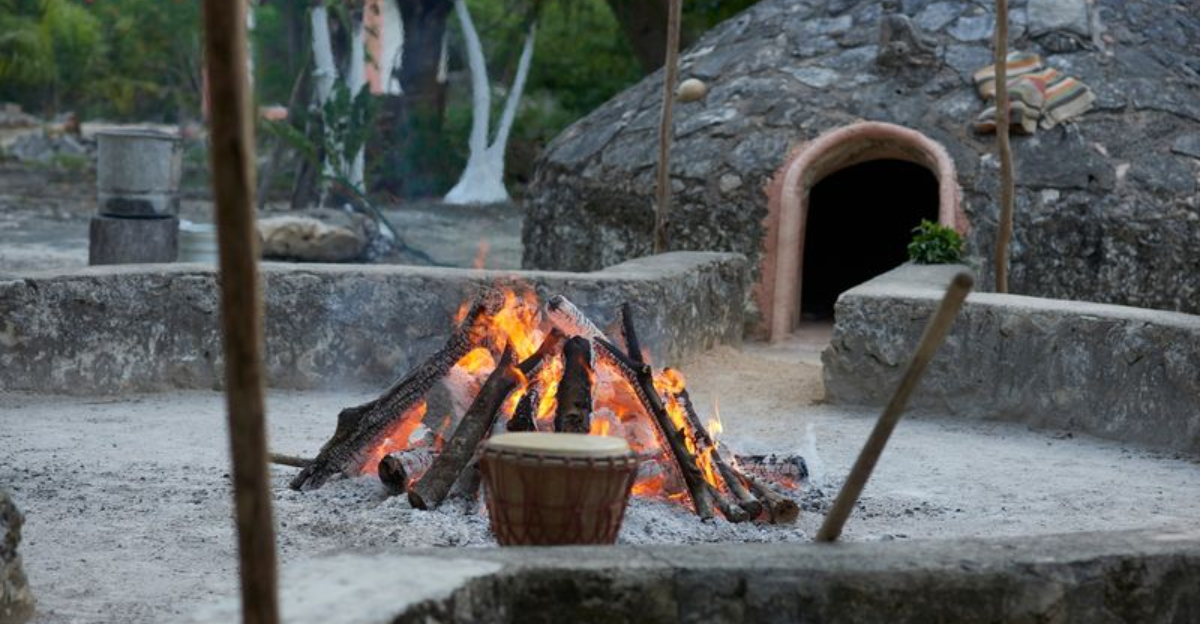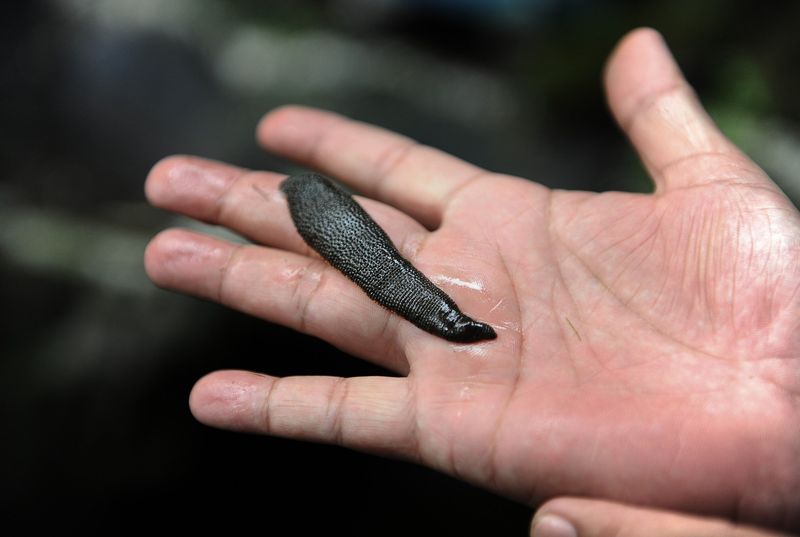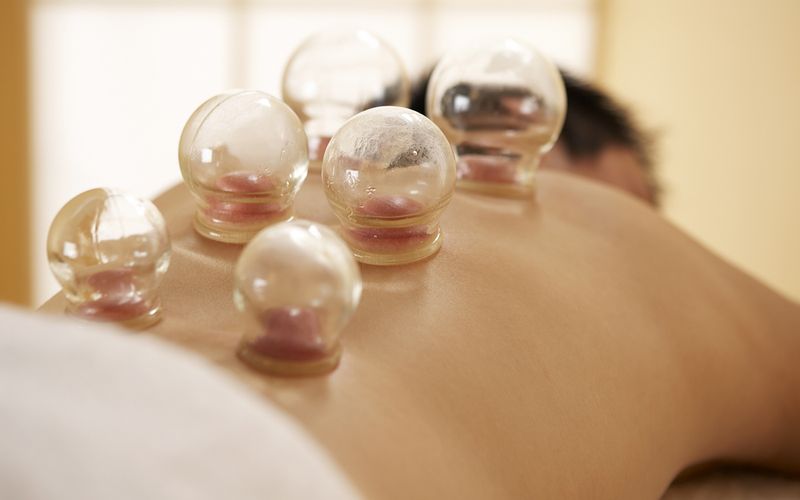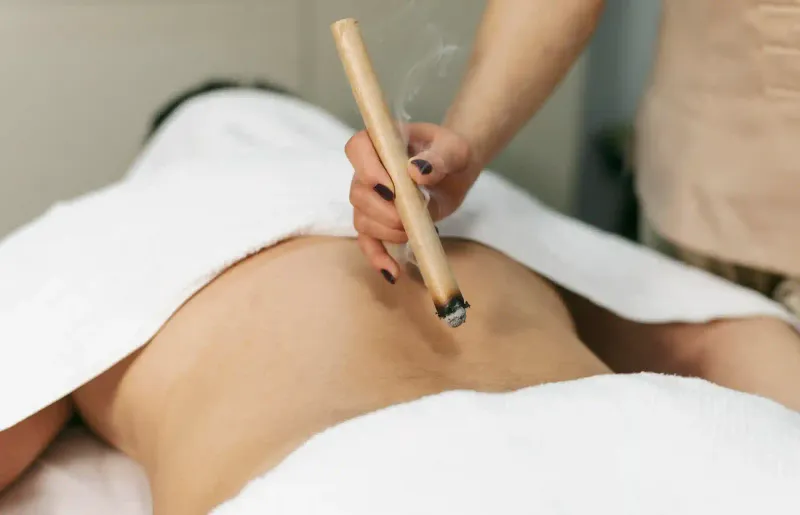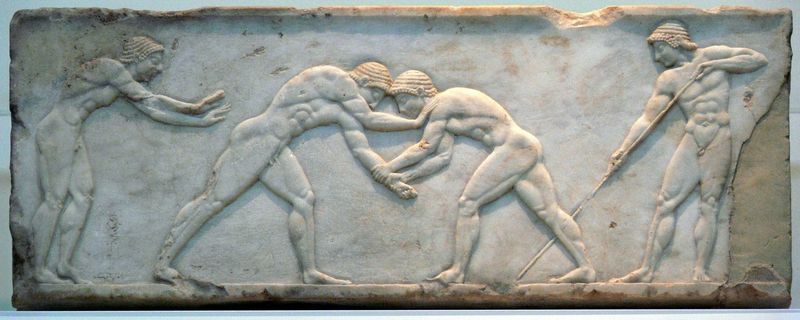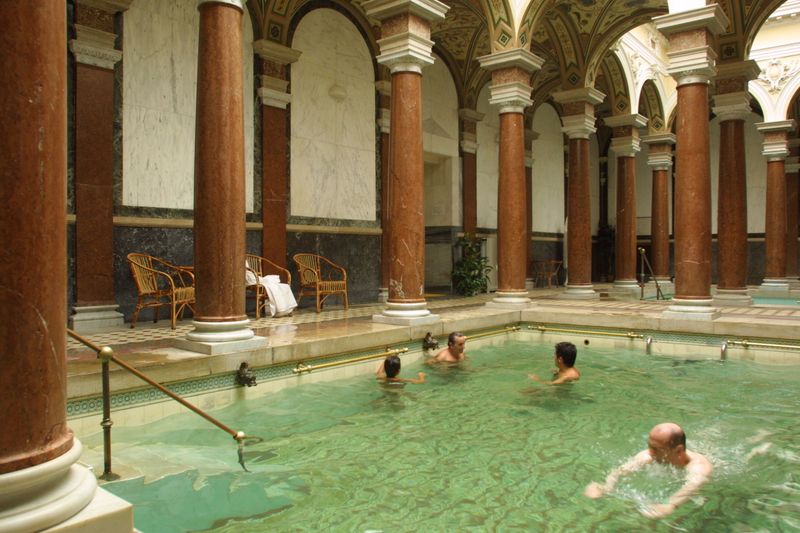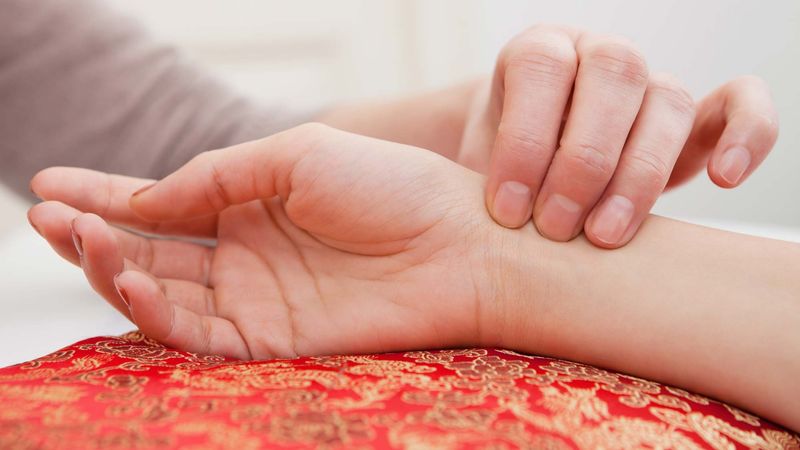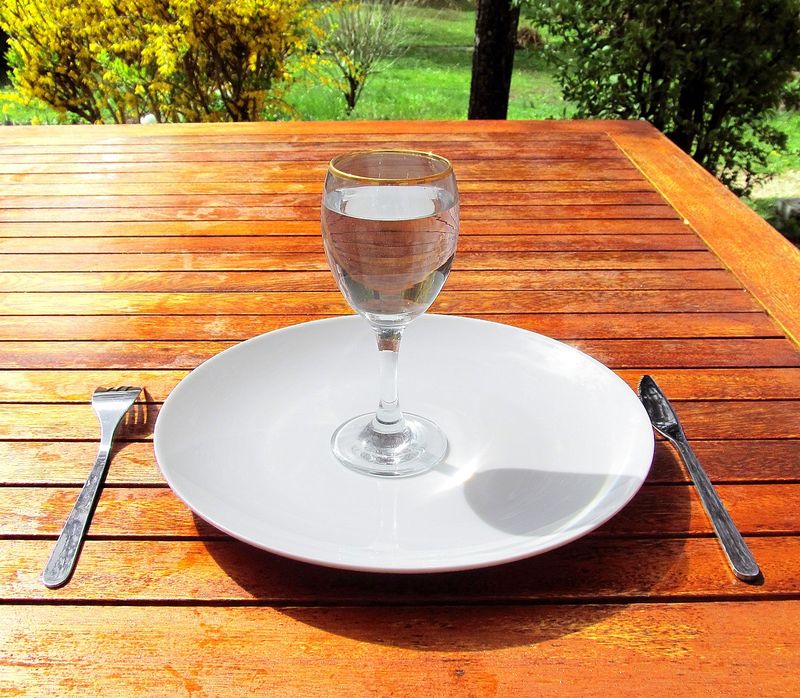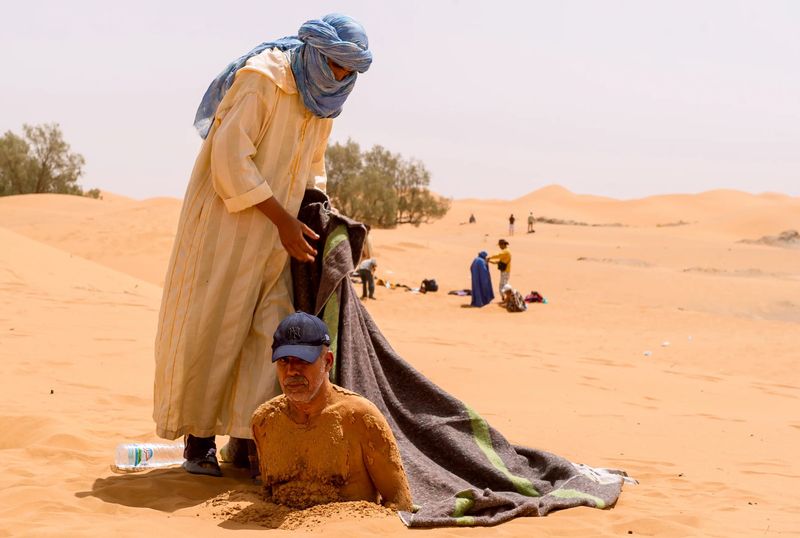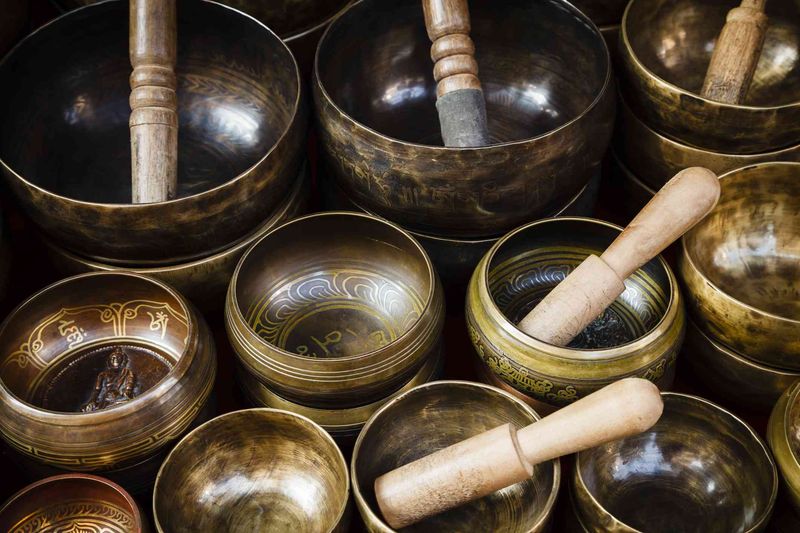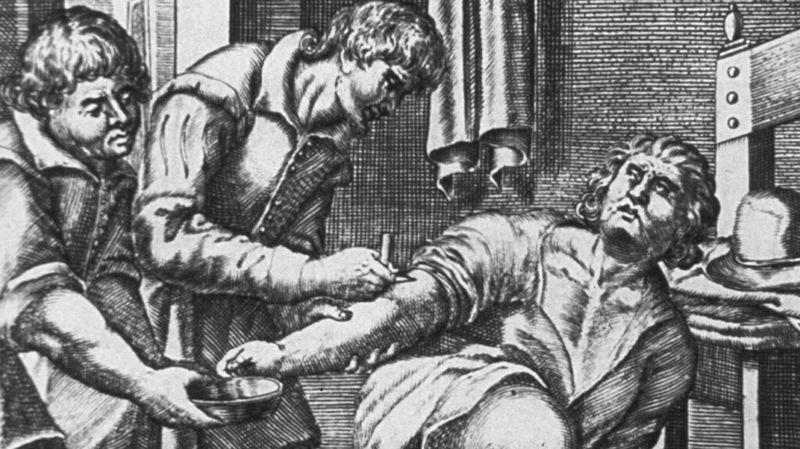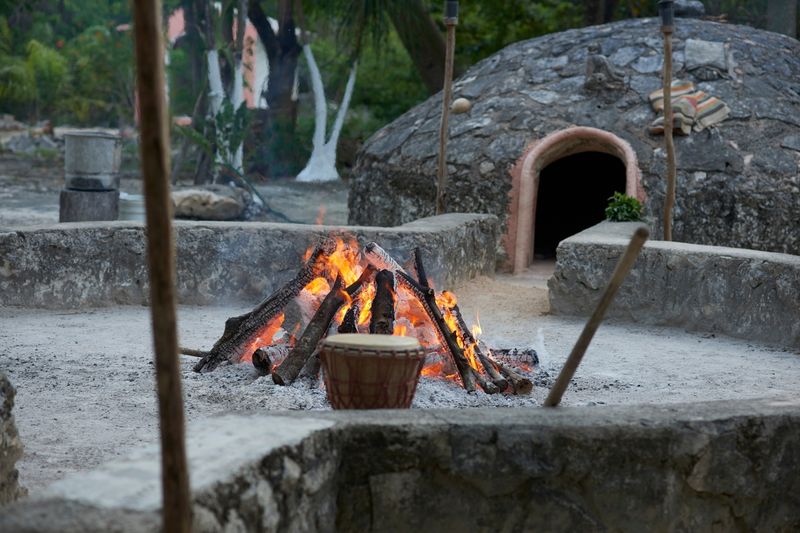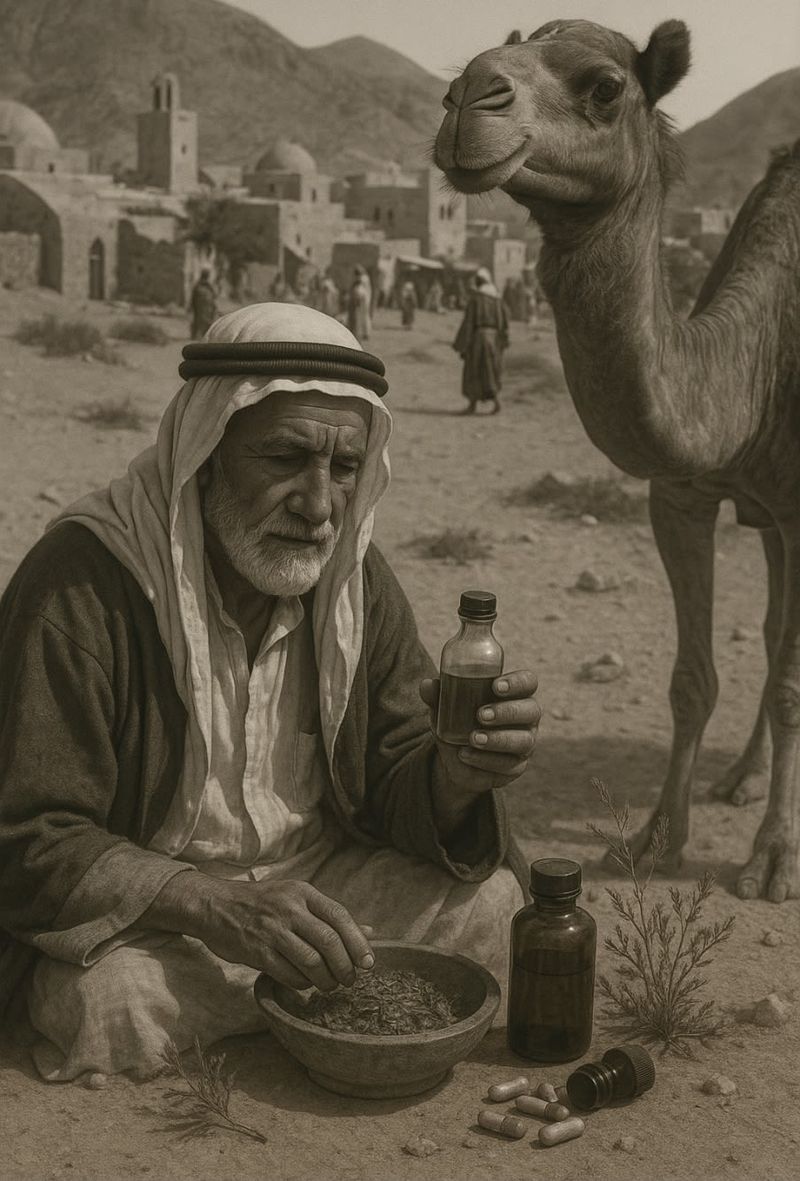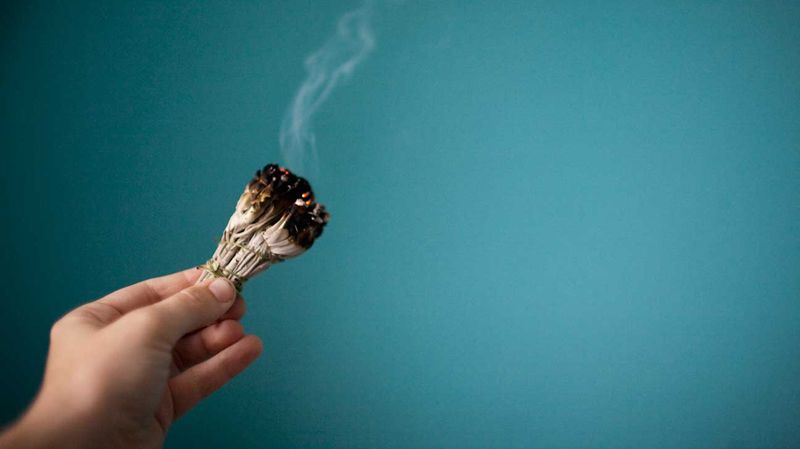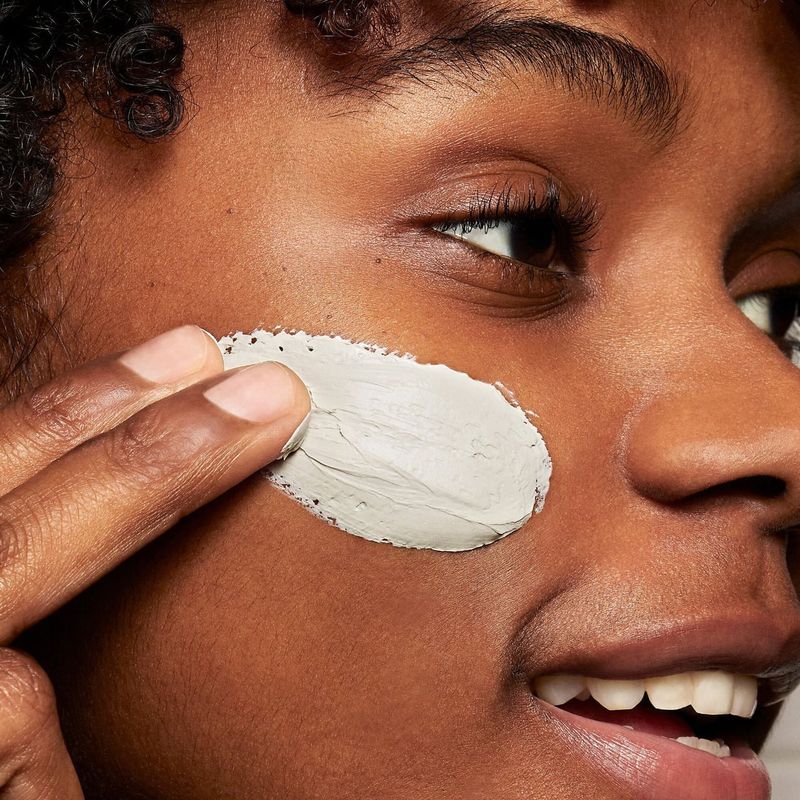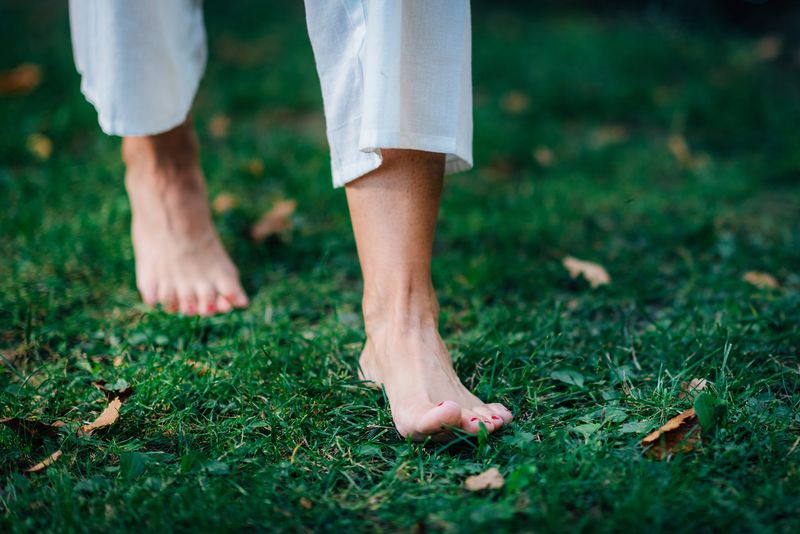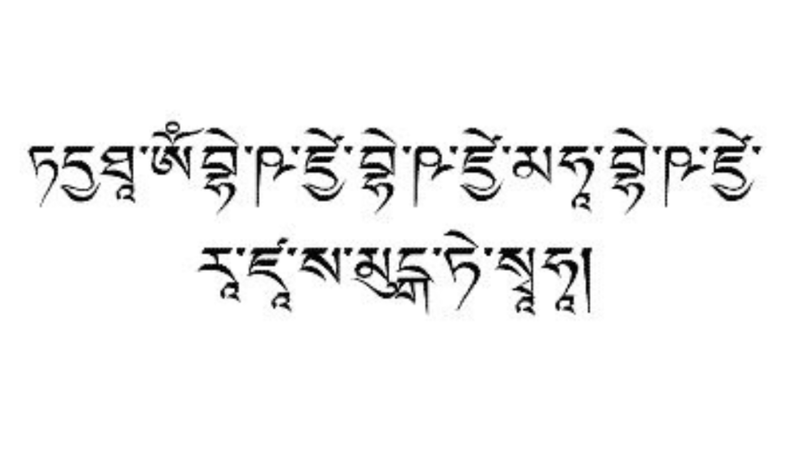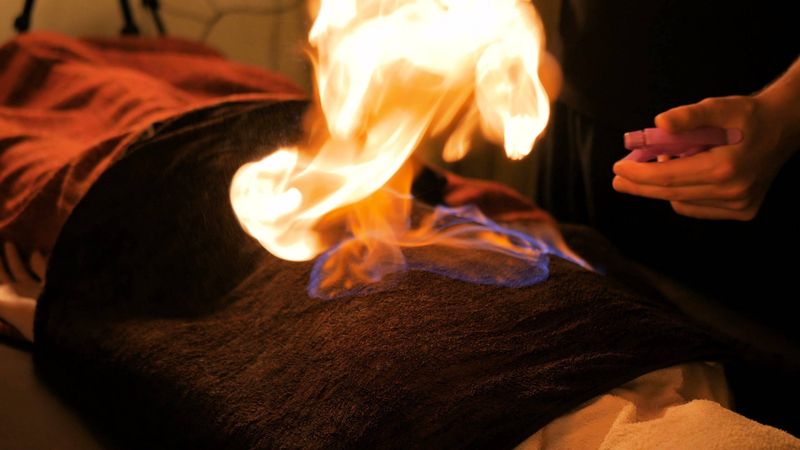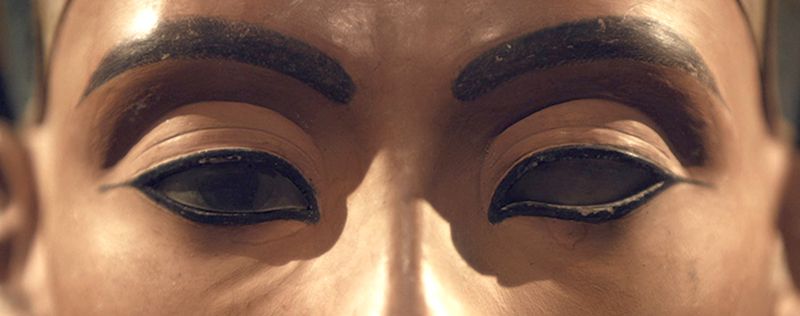I dove deep into ancient wellness for six months—scrolls, rituals, and remedies from across the globe. What I found was a strange mix of genius, nonsense, and downright dangerous ideas. Here are the 23 ancient health practices I explored—and the surprising truths behind them.
1. Oil Pulling
Swishing oil in your mouth for 20 minutes each morning might sound like a strange ritual, oil pulling actually provides some benefits for oral hygiene. It helps reduce harmful bacteria in the mouth, leading to fresher breath and healthier gums. However, it’s not a miracle cure for all dental problems. Some enthusiasts believe it can detoxify the body and improve overall health, but scientific evidence supporting these claims is limited. Despite its limitations, incorporating oil pulling into your daily routine can be a natural addition to your oral care regimen. Just don’t skip brushing and flossing for this ancient practice.
2. Leech Therapy
The thought of using leeches for therapy might give you the creeps, but these little bloodsuckers have been used for centuries. In ancient times, leech therapy was a common practice to treat various ailments. Today, it’s still used in rare medical cases, such as improving blood circulation after surgeries. The leeches release a special enzyme that helps prevent blood clots. While the idea of being bled for sport might sound absurd now, it was a serious medical procedure back then. Despite its historical roots, modern medicine offers more precise and less gruesome alternatives. Leeches, however, remain a fascinating part of medical history.
3. Cupping
Cupping, an ancient therapy involving suction cups on the skin, has gained popularity in recent years. This practice, believed to relieve muscle tension and improve blood flow, has been used for thousands of years. The suction created by the cups helps release tight muscles and promote relaxation. Many athletes and celebrities swear by its benefits, though scientific evidence is mixed. Although the giant red circles left on the skin may look alarming, they usually fade quickly. Cupping offers a unique way to experience alternative healing, blending ancient wisdom with contemporary wellness practices.
4. Trepanation (Skull Drilling)
The practice of trepanation, or drilling into the skull, sounds like something out of a horror movie. Yet, ancient surgeons performed this procedure with surprising skill and precision. It was often used to treat head injuries and neurological conditions, with some patients surviving the ordeal. Studying ancient skulls with trepanation marks reveals the resilience of early humans and their rudimentary medical knowledge. Although the idea of willingly getting a hole drilled into your head is terrifying today, it highlights the ingenuity and desperation of ancient medical practices. Thankfully, modern neurosurgery has evolved far beyond such primitive methods.
5. Moxibustion
Moxibustion involves burning herbs near the skin to facilitate healing and energy balance. This ancient practice is rooted in traditional Chinese medicine and is believed to enhance the flow of qi, or life energy. The process of moxibustion is not only therapeutic but also deeply relaxing. The aroma of burning herbs creates a calming atmosphere similar to a campfire. While scientific evidence is limited, many practitioners swear by its benefits, claiming improved circulation and pain relief. As a complementary therapy, moxibustion continues to intrigue those seeking alternative healing methods.
6. Ancient Greek Gymnastics
Ancient Greek gymnastics, advocated by Hippocrates, is the precursor to modern fitness regimes. These exercises emphasized strength, flexibility, and endurance, much like today’s CrossFit or calisthenics. The Greeks believed in nurturing both the body and mind, integrating physical fitness into their daily lives. Practicing gymnastics in togas might seem amusing now, but it was a serious pursuit in ancient times. The legacy of Greek gymnastics lives on in contemporary fitness philosophies, reminding us of the timeless importance of physical well-being. From ancient arenas to modern gyms, the pursuit of fitness remains a universal endeavor.
7. Ayurvedic Diets
Ayurvedic diets, originating from India, focus on balancing the body’s energies through specific foods. This ancient dietary system divides individuals into doshas, or energy types, and prescribes foods aligned with their unique constitution. Emphasizing whole, natural foods, these diets aim to optimize digestion and overall well-being. While some Ayurvedic herbal powders may taste earthy, adherents believe in their profound health benefits. Modern nutritionists recognize the value of Ayurvedic principles, especially in promoting mindful eating and holistic health. This ancient practice offers a refreshing perspective on nourishment, blending tradition with contemporary dietary insights.
8. Roman Bathhouse Rituals
The allure of Roman bathhouse rituals lies in their luxurious, communal nature. These ancient wellness centers offered a blend of steam rooms, massages, and ice-cold plunges. Romans embraced the bathhouse as a social hub, where relaxation and rejuvenation were intertwined. The rituals involved alternating between hot and cold treatments, enhancing circulation and vitality. Modern spa experiences draw inspiration from these ancient practices, emphasizing the timeless appeal of indulgent self-care. Though lacking the opulence of contemporary spas, Roman bathhouses set the standard for holistic wellness, blending physical and social well-being.
9. Chinese Pulse Diagnosis
Chinese pulse diagnosis, a cornerstone of traditional Chinese medicine, involves assessing a person’s health through their pulse. Practitioners use their fingertips to discern subtle changes in pulse patterns, offering insights into various health conditions. During my session, the practitioner accurately identified my stress and dehydration levels, leaving me astounded. This ancient diagnostic technique, often considered mystical, relies on the practitioner’s skill and experience. Despite skepticism, many find it surprisingly accurate, making it a fascinating aspect of holistic health practices. Even in the age of modern medical technology, pulse diagnosis remains a testament to traditional healing arts.
10. Fasting for Purification
Fasting for purification is a time-honored practice found in many cultures. It’s believed to cleanse the body and mind, fostering spiritual and physical renewal. While fasting can indeed offer benefits such as improved metabolism and mental clarity, it comes with challenges. As I abstained from food, my mind wandered to thoughts of delicious pancakes, highlighting the struggle of resisting temptation. Though effective for short-term detoxification, prolonged fasting can lead to undesirable side effects like fatigue and dizziness. This ancient practice demonstrates the delicate balance between discipline and indulgence, offering a unique path to self-discovery and health.
11. Hot Sand Therapy (Egypt)
Imagine the warmth of sunlit sand enveloping your body, soothing your muscles and calming your mind. Hot sand therapy, an ancient Egyptian practice, offers this serene experience. Lying buried in warm sand is believed to alleviate joint pain and improve circulation. However, unexpected visitors like ants might occasionally disrupt the tranquility. Despite this, the therapy provides a unique connection with nature, promoting relaxation and well-being. Ideal for those seeking alternative healing methods, hot sand therapy showcases the Egyptians’ innovative approach to wellness, blending the elements of earth and sun into a harmonious therapeutic experience.
12. Mastication (Chewing 100x)
In ancient Japan, monks practiced mastication, chewing each bite 100 times. This meticulous approach to eating was believed to enhance digestion and mindfulness. I embarked on this challenge, savoring every morsel with deliberate focus. While my jaw eventually protested, the experience fostered a deeper appreciation for food. Beyond its potential digestive benefits, this practice encourages present-moment awareness and gratitude for nourishment. Although modern life often demands quicker meals, revisiting this ancient technique offers a refreshing perspective on mindful eating. As my jaw recovered, I contemplated the profound simplicity and wisdom behind this seemingly mundane ritual.
13. Singing Bowls and Sound Healing
The enchanting resonance of singing bowls creates a soundscape for meditation and relaxation. This ancient practice, rooted in Tibetan traditions, involves producing harmonic tones that resonate with the body’s energy centers. Engaging with sound healing invites a state of tranquility, easing stress and promoting mindfulness. While these bowls won’t mend a sprained ankle, they offer an auditory journey to inner peace. The unique vibrations encourage introspection and balance, making it a captivating form of alternative therapy. In a world filled with noise, the gentle hum of singing bowls provides a soothing oasis for the mind and spirit.
14. Bloodletting for Fevers
Bloodletting, once a common remedy for fevers, now seems archaic and perilous. This practice involved withdrawing blood to restore balance in the body, often leaving patients weak and vulnerable. Although once believed to cure various ailments, it frequently did more harm than good. Studying its history provides insight into the evolution of medical understanding. Thankfully, modern medicine has replaced such risky procedures with safer, evidence-based treatments. While bloodletting’s legacy lingers as a cautionary tale, it highlights the journey of medical progress. Delving into its past offers a stark reminder of the leaps we’ve made in healthcare.
15. Herbal Steam Baths (Mesoamerican Temazcal)
Stepping into a temazcal, a traditional Mesoamerican steam bath, feels like entering a cocoon of warmth and healing. The herbal-infused steam envelops the body, encouraging detoxification and spiritual renewal. This ancient practice serves as both a physical cleanse and a ritual of transformation. Emerging from the temazcal feels like shedding layers of stress and tension, leaving a sense of revitalization. The communal aspect of this ritual fosters connection, blending tradition with holistic wellness. For those seeking a profound reset, the temazcal offers a journey into the heart of ancient healing wisdom, merging the elements of earth, fire, and water.
16. Camel Urine (Yes, Really)
Camel urine, a peculiar remedy mentioned in early Arabic medicine, defies conventional healing norms. While the notion of consuming it may be unsettling, it was historically believed to treat various diseases and purify the body. Modern research into its therapeutic properties remains controversial and limited. I opted to bypass this unconventional treatment, but its presence in ancient texts sparks curiosity. Despite its dubious reputation, camel urine represents the lengths to which ancient cultures would go in their quest for health. This practice stands as a testament to the diverse and sometimes baffling landscape of historical medicine.
17. Smudging with Sage
The aromatic ritual of smudging with sage involves burning the herb to cleanse spaces and energies. This practice, rooted in Indigenous traditions, is believed to purify environments and invite positive vibes. The fragrant smoke creates a sensory experience, lifting the mood and enhancing spiritual awareness. While its healing properties are debated, smudging offers emotional and psychological benefits. As the smoke rises, it symbolizes the release of negativity, fostering a fresh start. Whether as a spiritual practice or an aromatic indulgence, smudging with sage transforms spaces with its ancient wisdom and modern appeal.
18. Mud Plasters
Mud plasters, an ancient skincare remedy, involve applying a mixture of earth and water to the skin. This practice, embraced by various cultures, is believed to draw out impurities and rejuvenate the complexion. The cooling sensation of wet mud offers a refreshing contrast to the heat of the sun. However, once it dries, the mud can crack like a parched desert floor. Despite this, the natural minerals within it promote healthier skin. Mud plasters provide a tactile connection to nature, blending simplicity with self-care. As an age-old beauty secret, they reveal the timeless allure of the earth’s elements in nurturing the body.
19. Goat Milk for Immunity
Goat milk, with its distinct taste, has long been hailed for its health benefits. Ancient cultures prized it for its nutritional value and believed it could boost immunity. Drinking goat milk may take some getting used to, but its effects on gut health are noteworthy. Rich in vitamins and minerals, it’s considered easier to digest than cow’s milk. For those with lactose intolerance or digestive issues, goat milk offers a viable alternative. Although its flavor may be unconventional, the benefits it provides make it a worthy addition to a health-conscious diet. The legacy of goat milk’s wholesome qualities endures in modern wellness circles.
20. Barefoot Earthing
Walking barefoot on natural ground, or earthing, connects us to the earth’s energy. This simple act is believed to stabilize our body’s bioelectrical systems, fostering a sense of calm and well-being. Science suggests that direct contact with the earth can help reduce stress and inflammation. Strolling barefoot on grass or sand offers an organic reconnection with nature, grounding both body and spirit. However, the experience can be chilly depending on the weather. Despite this, earthing remains a therapeutic practice, emphasizing the harmonious relationship between humans and the earth. It invites us to slow down and embrace the present moment.
21. Sanskrit Mantras for Healing
Chanting Sanskrit mantras, a practice rooted in ancient Indian traditions, is believed to tap into profound healing energies. The rhythmic repetition of these sacred sounds can calm the nervous system and promote mental clarity. Engaging with mantras invites a spiritual journey, blending sound with mindfulness. Whether seeking solace or empowerment, their vibrational qualities offer a soothing balm for the soul. While the science of mantras is still unfolding, their spiritual essence captivates those in search of inner peace. This melodic practice highlights the timeless intersection of sound and spirituality, offering a serene pathway to wellness.
22. Fire Massage (Yes, It Exists)
Fire massage, an unconventional therapy, blends heat and massage techniques for a fascinating treatment experience. While I didn’t partake, witnessing it was mesmerizing and mildly terrifying. The practice involves applying flammable liquids to the skin and igniting them briefly. Proponents claim it helps relieve muscle tension and improve circulation. Despite its dramatic appearance, fire massage requires skilled practitioners to ensure safety. This unique therapy, with its blend of spectacle and healing, captivates the adventurous spirit. Amidst modern wellness trends, fire massage stands as a bold testament to alternative healing’s endless possibilities.
23. Ancient Egyptian Eye Liner (Kohl)
The use of kohl, a traditional eyeliner, extends beyond mere cosmetic allure. In ancient Egypt, it served as a protective measure against the sun and infections. Cleopatra’s iconic kohl-rimmed eyes symbolize beauty and medicinal ingenuity. The application of kohl involved using a stick to apply the powdered mineral around the eyes. Its dark, dramatic effect doubled as a sunblock, reducing glare and eye strain. Additionally, the antibacterial properties of kohl contributed to eye health. This ancient cosmetic’s dual purpose highlights the Egyptians’ blend of aesthetics and function, a testament to their innovative approach to beauty and wellness.
